Authors:
ABSTRACT
Aim
Aim of this study was to evaluate the marginal microleakage of a dental sealant using different pre-treatment techniques
of the enamel surface.
Methods
Thirty extracted human intact teeth were selected and divided into 3 groups (n = 10) (1: acid etching
with 37 orthophosphoric acid - 3M ESPE, St. Paul, Minnesota, USA; 2: air abrasion; 3: air abrasion + acid etching). The sealant
(Helioseal, Vivadent Ivoclar AG, Liechtenstein) was applied into occlusal pits and fissures and light cured for 40 sec. All samples were
thermocycled for 500 cycles (5-55C). Teeth were then immersed into a 2 methylene blue solution for 24 hrs and
sectioned in a mesio-distal direction. Forty-eight sections were obtained for each group. Each section was analysed and photographed
with a stereomicroscope (50x) assessing dye penetration (0: no dye penetration; 1: dye penetration restricted to the outer half of the
sealant; 2: dye penetration restricted to the inner half of the sealant; 3: dye penetration into the underlying fissure). STATISTICS: Data
were statistically analysed (Mann-Whitney test).
Results
Specimens prepared after air abrasion combined with acid etching showed
lower microleakage expression if compared with the other two groups (p<0.01). Conclusion A combination of mechanical air abrasion
and chemical acid etching represents an effective pre-treatment of enamel surface that may significantly reduce the risk of
microleakage.
PLUMX METRICS
Publication date:
Keywords:
Issue:
Vol.8 – n.1/2007
Page:
Publisher:
Cite:
Harvard: L. Bevilacqua, M. Cadenaro, A. Sossi, M. Biasotto, R. Di Lenarda (2007) "Influence of air abrasion and etching on enamel and adaptation of a dental sealant", European Journal of Paediatric Dentistry, 8(1), pp25-30. doi:
Copyright (c) 2021 Ariesdue

This work is licensed under a Creative Commons Attribution-NonCommercial 4.0 International License.
